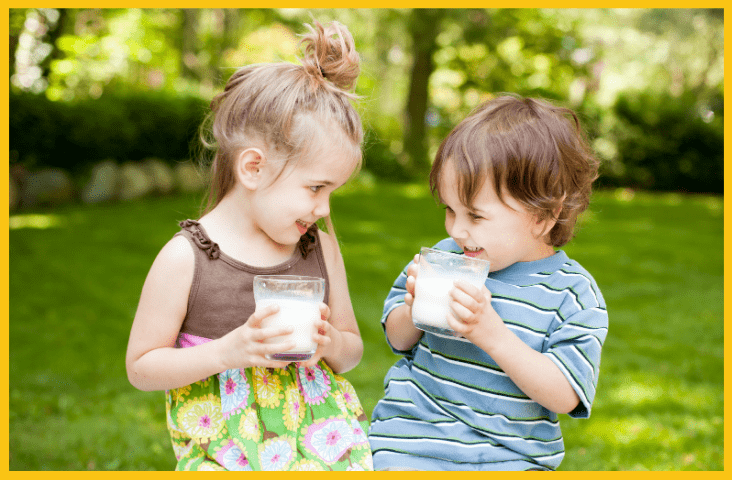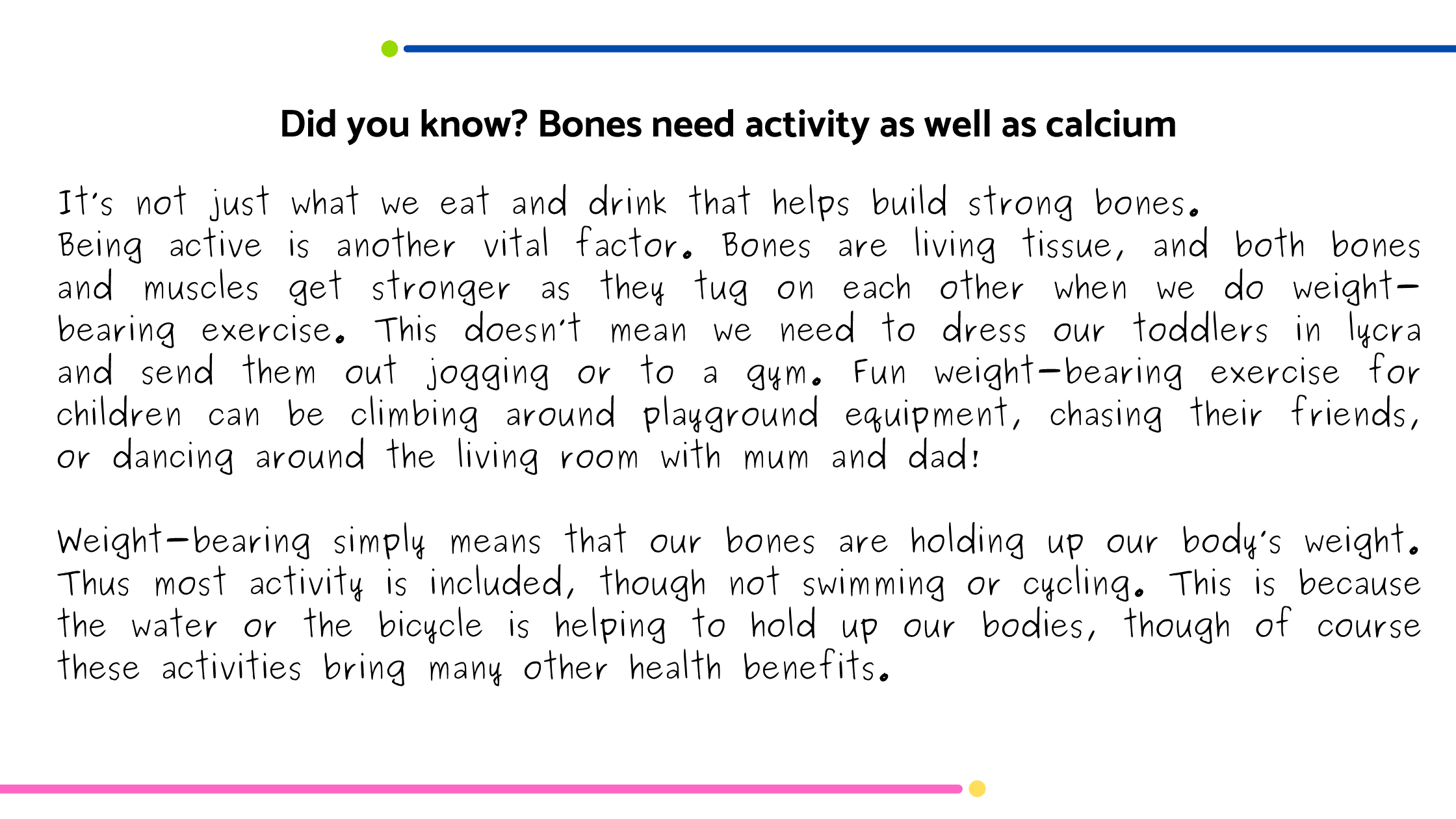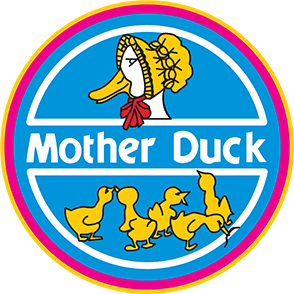
Catching the Calcium – Making sure your little ones are getting all they need
Many older children are not eating enough calcium, and it’s worrying that this may impact on their bone strength in many decades’ time. While most of the Mother Duck children probably have perfectly adequate intakes, research suggests this may change as they grow older. So the purpose of this newsletter is to make parents and carers aware of the importance of calcium and keeping an eye on it as your children grow up. Here’s the ‘what is it?’, ‘where is it?’ and ‘why do we need it?’ for this vital nutrient.
What is calcium and why do we need it?
I’m sure you all know that calcium is a mineral and that one of its primary functions is building strong bones and teeth. In fact, calcium is so important to us that it makes up about 2% of an adult’s body, with most of this stored in the bones.
Along with bone and tooth formation, it’s also vital for the function of muscle, including the heart muscle, and nerve transmission. In addition, calcium plays a role in blood clotting and a number of other body functions.

Who isn’t getting enough?
The 2011-13 Australian Health Survey reported that nearly three out of four females and one in two males over the age of two had inadequate calcium in their diets. That’s a warning to all the parents and carers out there – both for themselves and the children they look after. This statistic is a bit misleading because at age 2-3 almost all children do meet their calcium needs. However the rate of poor intakes skyrockets after this. At age 4-8 more than 10% of boys and 20% of girls have low intakes, and approximately half of children of 9-11 years aren’t consuming enough. It increases even further after this.
One reason for low intakes is the misconception that dairy foods are high in fat and calories – thus they may be avoided by calorie-conscious girls (and sometimes boys) as they grow older. In reality, low-fat dairy foods are a great source of protein, calcium, and a range of other vitamins and minerals, and are not particularly high in calories. Note that children under the age of 2 are advised to have full-fat dairy foods.
Another factor that limits calcium intake is people avoiding dairy foods, the richest source of calcium, due to allergy or intolerance. While some people do have a genuine and sometimes exceedingly serious allergy or intolerance, research suggests many more people avoid dairy when they don’t actually need to.
The rising popularity of vegan diets has also increased the number of people avoiding dairy foods in the past few years. As you’ll read in the next section, there are plenty of calcium sources and fortified foods that are suitable for a vegan diet.
Whatever the reason for a lower calcium intake, it’s particularly worrying because it is so common just when our kids have their highest calcium requirements – during early childhood and adolescence especially when children are growing most quickly and need calcium to build strong bones. Without enough calcium, our children’s bones won’t achieve their highest possible ‘peak bone mass’ – the point at which their bones are their strongest, which is thought to occur between the ages of 20 and 30. Not reaching maximum peak bone mass may impact bone strength through the rest of a person’s life, and even influence the risk of osteoporosis many decades hence.

Where do we get calcium, and how much is enough?
Milk and dairy foods are the richest sources of calcium in the Australian diet. Although they’re not the only place we find calcium, they have the advantage over some of the other sources that the calcium they contain is quite easy for our bodies to absorb. If you and your children are able to eat dairy foods, a few servings a day will provide all the calcium any of you need. One serve is:
- 1 cup of milk (or calcium-fortified soy milk; look for those that supply at least 100mg calcium per 100ml)
- 40g cheese (approximately 2 slices, or a large, matchbox-sized chunk)
- A 200g tub of yogurt (or calcium-fortified soy dessert)
Each of these is equivalent to approximately 300mg of calcium. Note that breast milk or specially prepared infant formula should be given to children under the age of 12 months as the main milk source.

Non-dairy sources of calcium include:
- Tofu made using calcium sulphate (check the label for calcium levels, because they can vary markedly in tofu)
- Dark green leafy vegetables, such as bok choy, spinach, and broccoli
- Tinned fish that contain small, edible bones, such as salmon and sardines
- Nuts and seeds – almonds, Brazil nuts, and sesame seed paste (tahini) are among the nuts and seeds that are higher in calcium. (Of course, whole nuts are not suitable for children under 5, so they need to be chopped or as paste, and avoid nuts if directed to do so because of allergy guidelines.)
- Calcium-fortified foods – some processed foods have calcium added to them, including orange juice, bread, and breakfast cereals. Note that it’s only those that state on the label that they have extra calcium added to them.
Bear in mind that you usually need to eat more of the non-dairy foods to get a significant amount of calcium. For example, a half-cup of cooked broccoli will supply about 45mg of calcium, of which about half will be absorbed into the body.

Here is a table with information on how much calcium is recommended daily for children, along with how many serves of dairy foods are suggested at different ages. It does take into account the fact that we will get some additional calcium from other foods, though it’s easy to see how much can be provided with just a few serves of dairy foods. See the websites in the Further Information section for adult needs. I’ve left out the information for babies because breast- or formula-feeding should ensure they meet their calcium requirements.
It may seem odd that there are different amounts of serves recommended for boys and girls at certain ages, but this is related to growth levels at certain ages. For example, girls tend to start their adolescent growth spurt earlier than boys.
|
Child’s Age |
Calcium – Recommended Dietary Intake |
Dairy Serves for Boys |
Dairy Serves for Girls |
|
1-2 |
500mg |
1-1½ |
1-1½ |
|
2-3 |
500mg |
1½ |
1½ |
|
4-8 |
700mg |
2 |
1½ |
|
9-11 |
1000mg |
2½ |
3 |
|
12-18 |
1300mg |
3½ |
3½ |
Calcium for life
While it’s worrying that both older children and adults may not be getting enough calcium, in a way this can make it easier to watch. Try to keep both your own and your children’s intake in mind, and maybe plan to include some high-calcium foods each day for you both if you’re not usually eating enough. Some suggestions include:
- Tinned salmon sandwich for weekend lunch
- Regular evening dessert of fruit and yogurt. Make it a fancy parfait of chopped berries, low-fat Greek-style yogurt and a crunchy sprinkle of chopped nuts or muesli for special occasions
- Calcium-fortified breakfast cereal with milk for breakfast – it also makes a nutritious snack
- Reduced-fat cheese and tomato on toast (choose full-fat dairy foods for under-twos).
It’s reassuring that setting up good calcium habits now, with regular dairy or other calcium-rich foods, can help build stronger bones that will carry your children around for the rest of their lives.
Further information
For more on the importance of calcium at different ages, where to find it, and how much to aim for, try these websites:
- https://www.betterhealth.vic.gov.au/health/healthyliving/calcium
- https://nutritionaustralia.org/fact-sheets/dairy-foods-how-much-is-enough/
- https://www.eatforhealth.gov.au/food-essentials/how-much-do-we-need-each-day/recommended-number-serves-children-adolescents-and
- https://www.eatforhealth.gov.au/food-essentials/how-much-do-we-need-each-day/recommended-number-serves-adults
© Fiona Hinton 2021
MEDICAL DISCLAIMER: Please note that this newsletter is for general information only, and should not be taken as a substitute for qualified medical advice. Please discuss medical issues with your child’s doctor before taking any action.
About Fiona: Fiona Hinton is a dietitian, but describes herself as a nutrition translator, taking the science of nutrition and translating it into foods we love to eat, to nourish both body and soul. She has over 20 years of experience as a dietitian, working in a wide range of areas from hospital wards to running her own private practice. Fiona has a special interest in children’s nutrition. As a mum of three school-age boys, she has first-hand experience of the issues associated with feeding young children, such as weaning and fussiness. Fiona specialises in real-life strategies and practical suggestions to convert nutrition advice into food kids will eat. Fiona has collaborated on several books, including one with best-selling children’s food writer Annabel Karmel, as well as training childcare staff in children’s nutrition.


